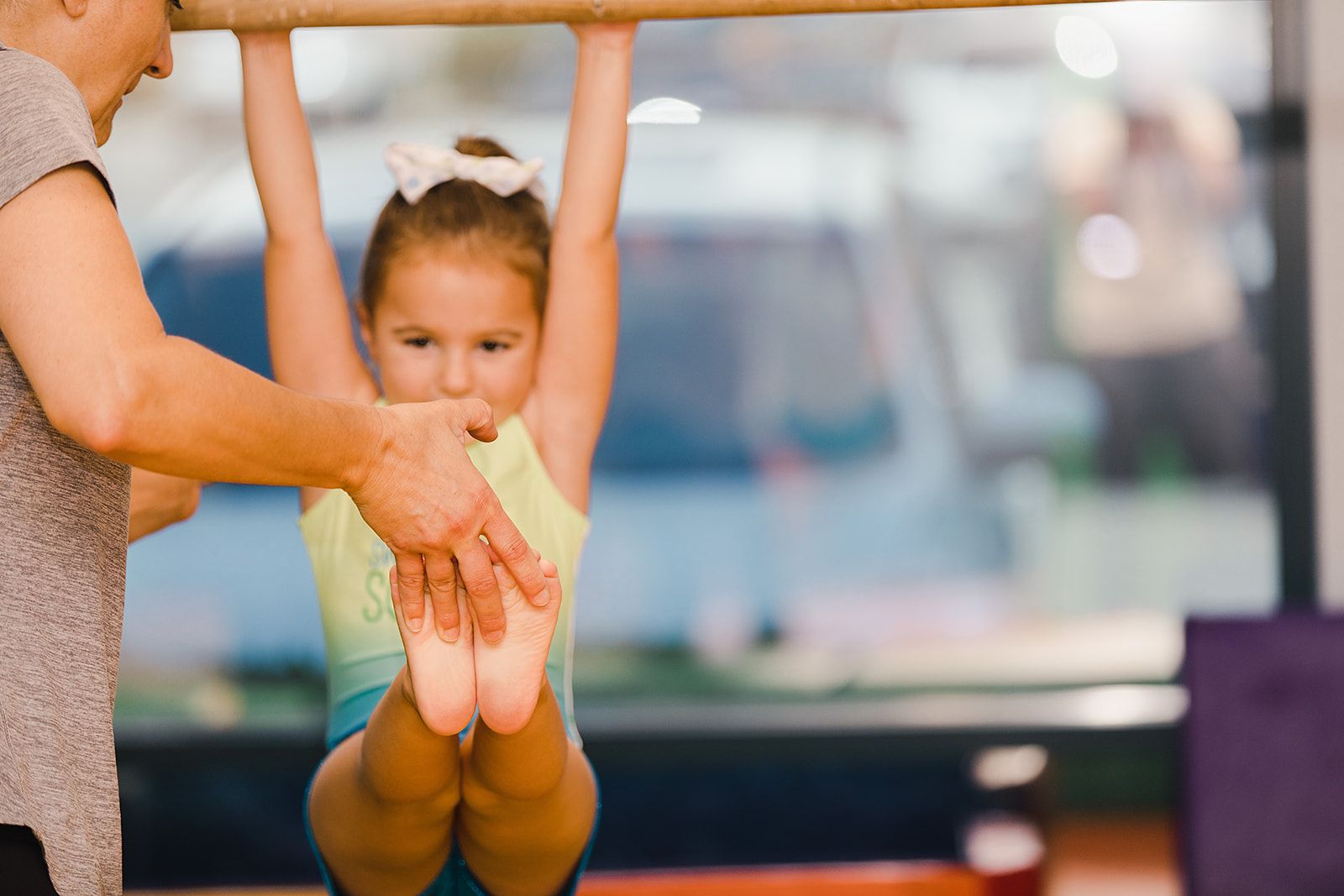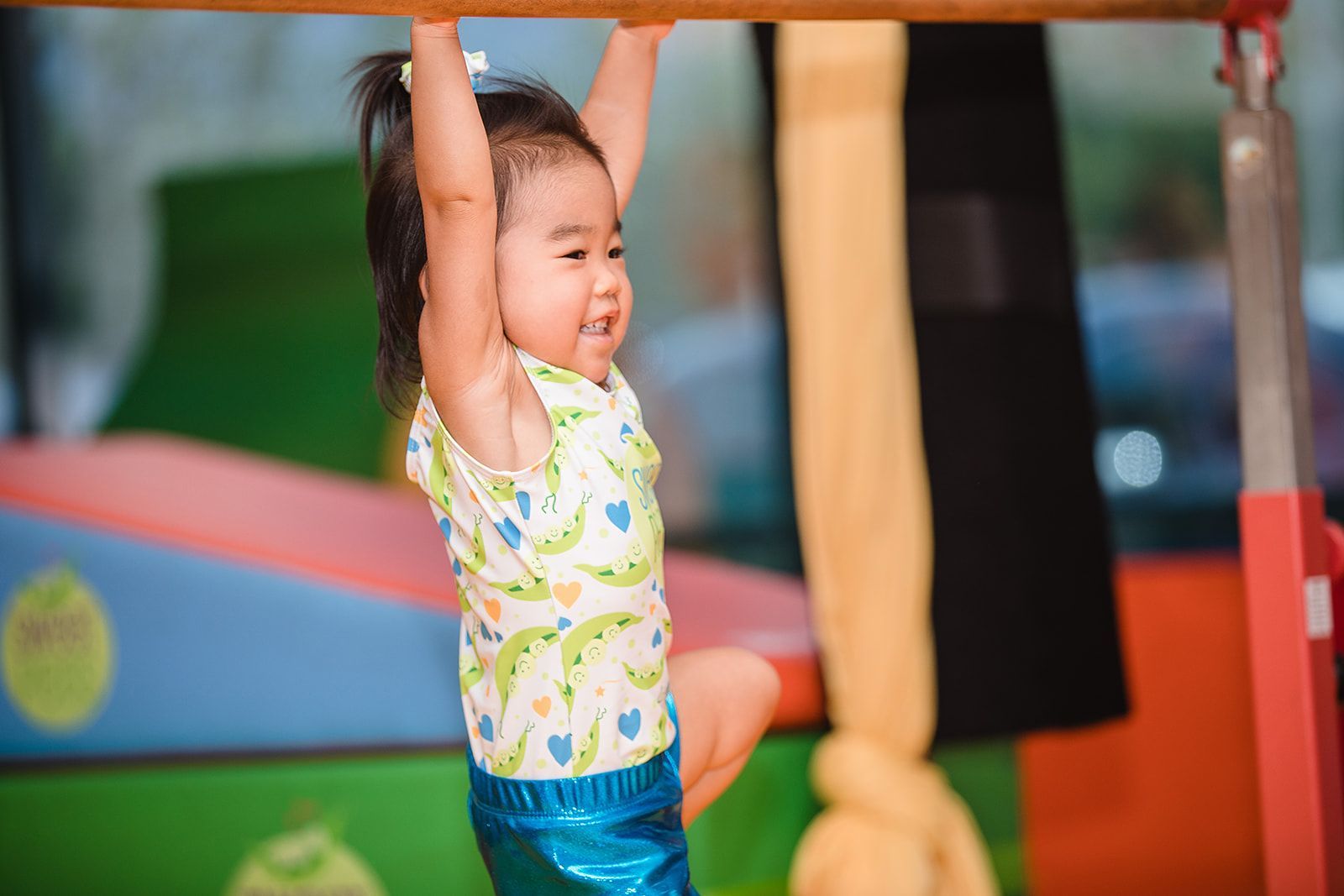Did you know that rolling...
October 28, 2025
The Sweet Pea Vine


THE SWEET PEA VINE
Did you know that rolling...
1. Engages the VESTIBULAR SENSE and provides our brain with information about motion, head position, and spatial orientation. Our vestibular system helps stabilize our head and body, and helps us maintain balance and posture.
2. Builds CORE STRENGTH. Forward rolls activate the abdominal muscles and stabilize the spine.
3. Promotes VISUAL TRACKING
and development. Changes in head positioning challenge the ocular motor system to adjust and calibrate. Visual tracking helps us track words on a page, write in a straight line, participate in sports, navigate a hallway and more!
In the ROLL
When kids are not busy rolling themselves around, they can learn a lot from observing and interacting with things that roll.
• Toys that can be rolled, pushed or pulled help children develop fine motor skills.
• Passing a rolling toy from one hand to the other promotes crossing the midline, which is important for bilateral coordination.
• Riding on and pushing large rolling toys promotes global motricity
as children employ complex motor planning
and engage multiple muscle groups.
• Playing with rolling objects promotes coordination between vision
and action and gives children experience evaluating distances.
• Playing with or on rolling toys helps children learn to anticipate the act of slowing down or accelerating and experience maintaining balance
while moving.
• Rolling play encourages a child's creativity
as little ones use their imagination to create stories, characters and scenes for their rolling play.
• Rolling objects also help children understand the relationship between pressure or force and movement and basic concepts of movement
and collision.
• Playing with rolling toys provides social opportunities
as children learn to roll alongside friends or roll a toy or ball back and forth to a playmate.
Get out the balls! Get out the cars! Hop on the ride toys! It's time to get rolling!

THE SWEET PEA VINE Gymnastics Gives Kids a Leg Up in Life Who did 12 ups at school? A gymnast. Who just tucked and rolled on the soccer field? A gymnast. Who's the 1 year old climbing over the back fence? A Sweet Pea gymnast! How can you spot a gymnast? 1. The 1 year old climbing over the back fence is a gymnast. Gymnastics promotes motor planning. Motor planning is the brain's ability to assess, organize and carry out the motions needed to complete a task. When a Sweet Pea grips the bar, swings forward and taps their feet on a barrel, that young brain is processing multiple complex movements including grip, head positioning, stepping forward, supporting full body weight by the arms, gauging the swing, lifting the legs, tapping the barrel and landing back on the mat. Getting a leg up over the back fence is a piece of cake for a Sweet Pea. 2. The 2 year old shimmying up the pole is a gymnast. Gymnastics builds whole body strength. Gymnasts use all their muscles! Gymnasts hold on tight, balance, swing, roll, dive, run, jump and twist their way to amazing muscular development and strength. Even the 12 or so muscles in your child's smile will get a work out in gymnastics class! 3. The 3 year old swinging the highest is a gymnast. Gymnastics provides amazing sensory processing opportunities. Inversions, rolls, spins and jumps are developmental powerhouses. Gymnastics engages our Sweet Peas' vestibular system and helps them develop their proprioceptive sense. The vestibular system provides information to our brain about where our body is in space. It helps our brain determine if our body is stationary or moving, how fast it is moving, and in what direction. The vestibular system is crucial for balance, coordination, motor control of the eye and bilateral integration. A well developed vestibular sense helps little ones develop confidence and trust in their movement. This is why Sweet Peas rule the swings. 4. The 4 year old high chanting and clapping for everyone is a gymnast. Gymnasts learn side by side. They try new skills, fall down, get up and try again. Gymnasts learn about sportsmanship, courage and determination. They understand what it feels like to succeed and they know what it feels like to miss. Gymnastics helps children develop pride in their accomplishments and in their friends' accomplishments. The little one at the bottom of the slide clapping for each child as they slide down? She is a gymnast. 5. The 5 year old who has fallen on her skates three times, and got back up four ... A gymnast. Gymnastics teaches kids that they can do hard things. Gymnasts know that it's okay to fall or slip. They learn to keep trying. Gymnasts learn how to listen to teachers and coaches. They learn how to apply corrections and strive for improvement. Gymnasts are teachable. Gymnasts are ready to learn.



